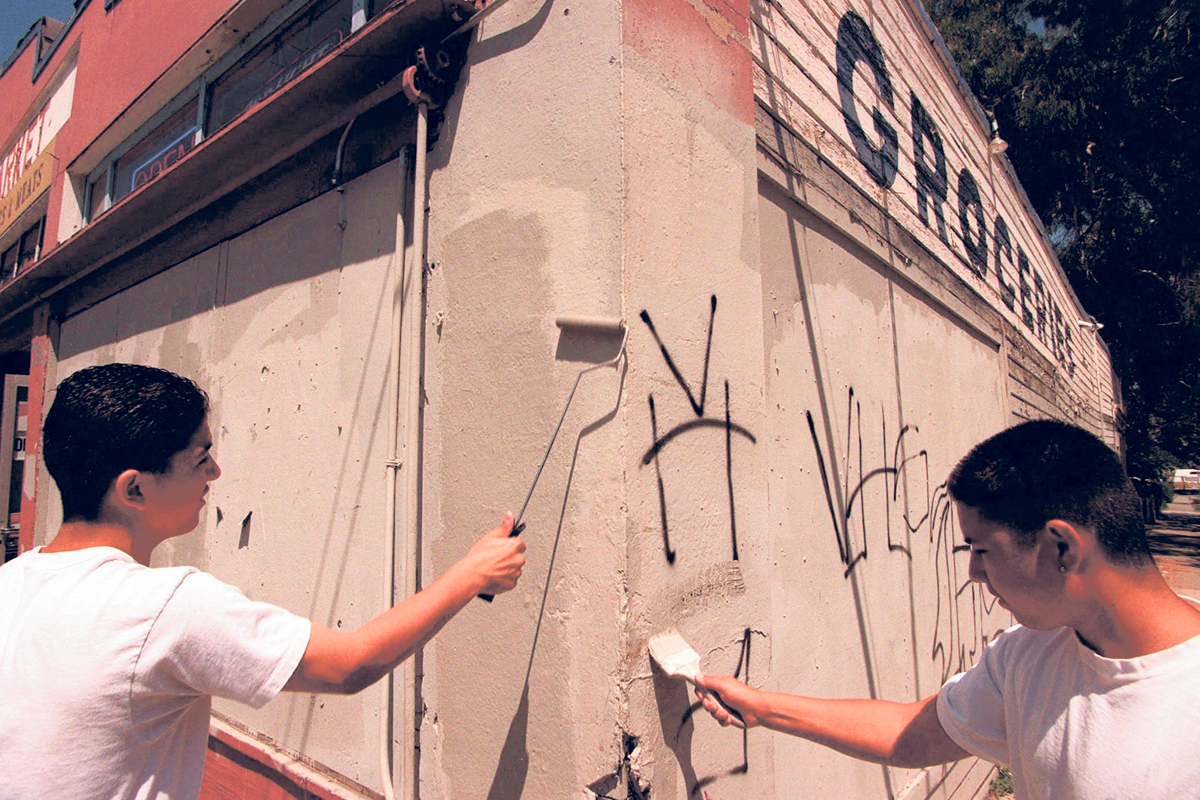Gang activity present in Logan
Throughout the country, cities are dealing with the effects of gang activity. Last year, Ogden passed an ordinance taking a hard line on the city’s oldest gang, the Ogden Trece, and while Cache Valley has neither Ogden’s size nor crime rate, gang-related crime is not unheard of.
“There’s a gang presence here,” said Louise Speth of the Logan City Police Department (LCPD). “I don’t think there’s a city or county in Utah that doesn’t have a gang presence.”
Over time, she said, gang-related crime has increased in correlation with the expansion of Cache County.
“As the valley grows, those issues grow also,” she said.
Violent Crime
Paul Todd, of the Cache County Sherriff’s Office (CCSO) gang division, said while they are few in number, there have been incidents of gang-related violence in the past.
“Ogden, we are not yet. Salt Lake, we are not yet,” Todd said. “We’re hoping to keep it that way.”
Cache Valley is geographically isolated, a feature Speth said likely contributes to fewer gangs entering the valley. When violent acts occur, they usually do not result in third-parties being effected.
“It tends to be gang on gang,” Speth said.
When Ogden passed its injunction against the Ogden Trece last year, there were concerns from neighboring cities that gang members would relocate to nearby areas. For now, Speth said, Cache Valley has not seen a spike in gang acitivity and she suspects the scenario is unlikely.
“They’re tied to the Ogden community,” she said. “That is their home.”
Criminal Mischief
Speth said the businesses of Logan city have helped minimize the visibility of Cache Valley gangs by responding quickly to instances of graffiti.
“There’s an assertive approach to getting it cleared off,” Speth said. “Our stuff gets cleared off so quickly it doesn’t get the re-tag.”
Graffiti, she said, is the most common form of gang-related criminal activity. If the “tags” are allowed to remain, typically the area will be swarmed with other tags as rival gangs respond to, or “re-tag,” each others’ markings. The efforts of Logan businesses, she said, have played a large part in preserving the aesthetics of the city and keeping gangs and their traces out of the spotlight.
Speth said last year there were slightly more than 100 incidents coded by LCPD as gang-related. That number, she said, is typical for Cache Valley. While graffiti is the most common crime, Speth said Logan is not free of the drug and violence issues that often follow gang activity. She estimated there are approximately three organized and named gangs in the valley. Over the years the number has been as high as six.
Gang Members
With a substantial portion of Logan’s image tied to Utah State University, gang presence can often seem smaller than it actually is.
“A lot of our gang members are juveniles,” Speth said. “It’s not to say we don’t have adult gang members, we do.”
Law enforcement agencies in the valley work with schools to educate students – particularly junior high and high school-aged – about gangs, as well as working one-on-one with parents to identify the concerns associated with gang membership and why this scene attracts teens.
“We might be able to make a difference with some of them,” Speth said.
Todd said a lot of the education is about letting communities know what they can do and bringing the public up to speed.
“We do have education where we actually teach people what gangs are,” he said. “We’re teaching prevention.”
Sutton Hanzalik, a patrol officer with the USU Police Department (USUPD), said the valley’s gang presence doesn’t usually carry over into USUPD jurisdiction. Instead, campus police officers will assist other law enforcement agencies with their criminal mischief calls. Hanzalik also sits on Logan’s gang task force as a representative of USUPD.
Hanzalik said the age of university students, and the general demographic of adults seeking higher education, tend to result in less gang activity.
“Up here, they kind of grow up out of that,” Hanzalik said. “There’s no doubt that they separate themselves because they’re trying to excel.”
He said occasionally groups will come into town and pass through campus but typically just move on.
“We’re pretty safe up here,” Hanzalik said.
Todd said officers in the gang unit are aware of individuals who belong to gangs and they try to observe what activity is going on.
“We see who’s with who and doing what,” Todd said.
The gang units in Cache Valley, he said, were put in place early on and are seeing success, but as the population grows the gang-related concerns will likely intensify.
“It’s a problem that’s only going to get worse,” Todd said.
Correctional Facilities
Sgt. Gene Eggleston of the CCSO corrections division said as inmates are processed at the Cache County Jail, gang affiliation is taken under consideration to avoid altercations by rival groups.
“We make sure we’re not putting anyone in danger,” Eggleston said.
Eggleston said when each inmate is admitted, they go through an operation and assessment station that codifies them based on a number of factors, among them being gang involvement. He said it’s not extremely often – about once a week – that gangs will come up in the assessment stage but even then it will not necessarily require special cell assignment.
“Typically when gangs get into a correctional situation they morph a little bit,” Eggleston said.
Eggleston said inmates typically express a desire to be placed with members of their same race and ethnicity, independent of gang affiliation.
– b.c.wood@aggiemail.usu.edu

